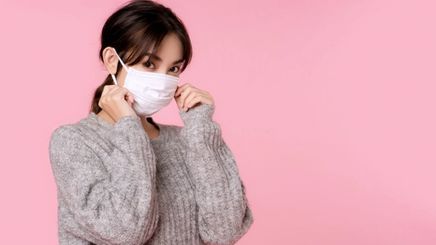
breakouts are a very real struggle these days, especially for Pinays dealing with humid weather. If you're reading this right now, you're probably on a frustrating quest to find how to remove and prevent them from happening. Note that there's a fine line between normal pimples and (face mask acne).
Both of these skin woes often arise from sweat, bacteria, and . Add a face mask to the equation and you get even more clogged pores as it creates friction and traps skin irritants, which eventually leads to maskne.
Since ditching your face mask when going out is not an option, what can you do? You don't have to forgo the health mandate that helps keep us and others safe. You can curb the dermatological downsides to wearing this protective gear. Take the right precautions like the ones below:
It Comes Down to Cleansing… Or Does It?
To prevent maskne, all you have to do is to wash your face frequently, right? It takes more than that, actually. Sure, you have to wash your face twice a day, ideally before you apply any skincare product in the a.m. and at night. But you might want to scan the ingredients of your cleansing products for a more effective anti-maskne initiative.
Removing dirt, oil, and makeup is typical for most facial cleansers. However, not all of them address acne-causing bacteria, which can thrive in your pores when left unchecked. Before you know it, you're getting cheek, , or chin breakouts already—yikes!
How to Remove Pimples Brought by Wearing Face Masks
The secret to avoiding maskne is essentially the same as avoiding pimples in general. You just have to be more meticulous.
1. Change your masks often.
Are you a mask reuser? Some masks, such as the surgical variety, are meant for one-time use. Others, such as N95 or KN95, can be used more than once, but with consideration. For example, if your mask becomes moist, you must throw it out. Masks collect bacteria that could clog up your pores.
2. Check your skincare products.
Do the products you use have antibacterial properties? It's best to use a mild facial cleanser that helps treat maskne, like the new Pond’s Anti-Bacterial Facial Foam. What makes the formula unique is , a beta hydroxy acid (BHA) that effectively rids your pores of dirt, dead skin cells, excess sebum, and most importantly, acne-causing bacteria. The recommended use for best results is once in the morning (before wearing your mask) and a second time in the evening (before going to bed).
3. Cleanse as you go.
It's a good practice to carry antibacterial products in your purse, too, especially whenever you go outside. Find the best face mist or a small tube of anti-acne wash. You can also add a face mist and facial wipes to your skin hygiene essentials. Freshen up with a swipe or a spritz when you’re getting sweaty or when your face is exposed to pollutants.
4. Wash your face regularly.
Because masks don't allow your skin to breathe, your pores are more prone to clogging. Be especially diligent with your skin care, especially with cleaning your face. Remember to wash up well. Don't go to bed with an unwashed face.
Use POND'S Bright Miracle Ultimate Acne Control Facial Foam to clear your skin of debris and oil, while protecting it from breakouts.
5. Be careful with your makeup.
Yes, you can still wear makeup under your mask. However, be more careful with how you prep your skin. Make sure your skin and makeup tools are clean. You should also choose nourishing priming products. Finally, don't forget step number four.
If you're stumped on how to remove pimples and prevent them now that face masks have become indispensable, let Pond’s Anti-Bacterial Range level up your skincare routine.